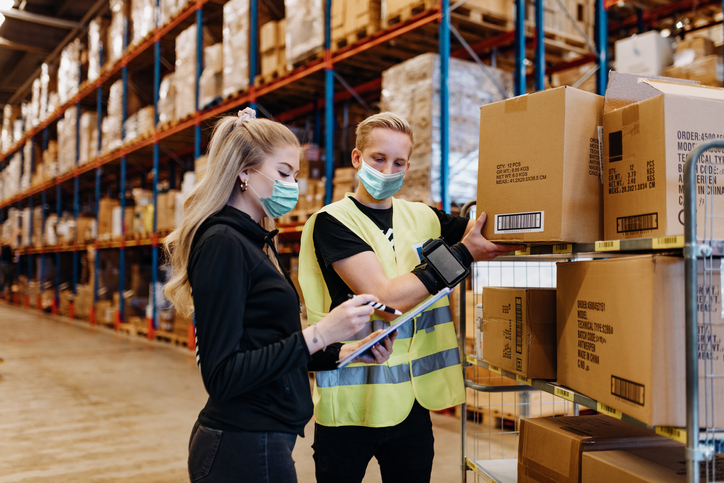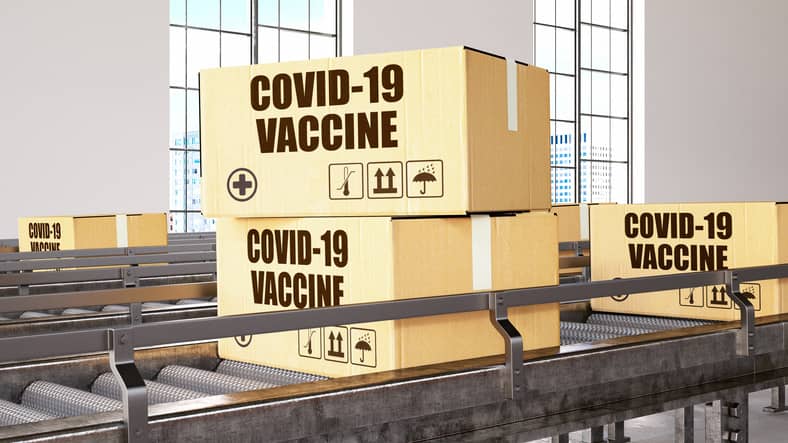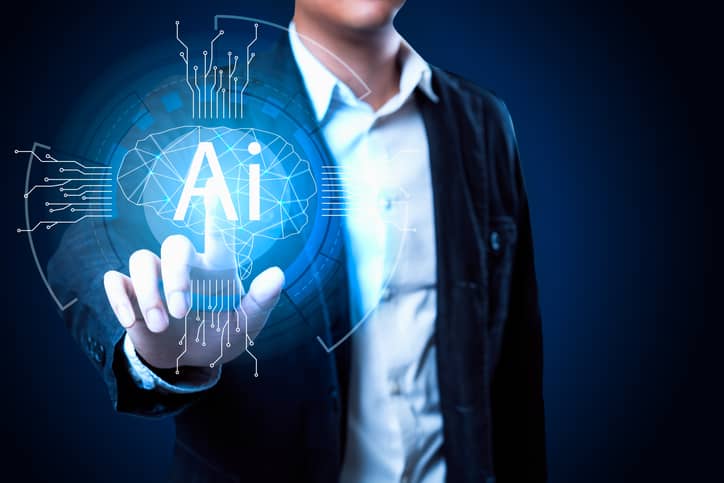Written by: Cory Levins
COVID-19 has upended the way people go about their lives. It has disrupted jobs, schoolwork and social interactions. Even a simple trip to the store is a lot more complicated in the age of COVID.
One of the significant ways COVID has changed the cultural landscape is the accelerated use of AI in logistics and other everyday machinations in the business world. While business leaders scramble to bridge the gaps in their supply chains laid bare by the coronavirus, AI has stepped in as a potential solution for many of these issues. But at what price?
Whether it’s a minor problem like allocating shipping materials where they need to be or broader issues like ensuring the supply chain remains intact to complete customer orders, AI and cloud-based automation could be a huge boon.
However, adopting AI, specifically robots, into the workplace could lead to more layoffs. Since the global pandemic began, hundreds of thousands have lost their jobs. It’s up to business leaders to assess whether the human costs of adopting AI into their supply chain is worth it.
On the one hand, advanced automation can help guard workers’ wellbeing and health by limiting the number of workers needed on the line. On the other hand, increased automation may cost people their jobs, which is never helpful and is especially fraught in the current quarantined environment.
Many industries will benefit from the adoption of precise, reliable AI automation like medical care and especially the movement of goods worldwide. Here are six specific ways AI could pop up in the time of COVID-19.
1. Using AI to Inspect Ships
One of the most demanding chores in maintaining a fleet of cargo ships is inspecting all of them for corrosion and other signs of wear and tear.
Seawater contains an enormous concentration of salt that, combined with metal, creates rust and corrosion. Additionally, if the ship is used to transport raw materials like chemicals of biohazardous elements, there could be further damage on the inside.
The shipping industry relies on inspectors to keep their fleets in excellent working condition, and it is always a challenge to keep up with the inspection demands of a busy fleet. AI could change all that.
At the moment, surveyors inspect every inch of a vessel at significant risk to themselves. This process is painstaking and time-consuming and, at times, inaccurate. With the advent of robotic inspection units, inspections could take less time and be more all-encompassing.
One group from Zurich has created a lightweight prototype that uses four magnetic wheels and an overlapping wheelbase to get to all the hard-to-reach spots like ballast tanks. RoboShip is another front-runner, an intelligent industrial robot with lots of potential.
2. Using AI to Fight Fires
One of the direst threats to on-ship wellbeing and activity is the threat of fire. Since the development of SAFFiR—Shipboard Autonomous Fire Fighting Robot—this threat may be drastically diminished.
SAFFiR can detect and respond to shipboard fires. If a fire is detected onboard, robots can retrieve hoses and bring them to the site to extinguish the fire. They can also withstand temperatures up to 932 degrees Fahrenheit and have special additions to seek out survivors in thick smoke.
3. A Fully Robotic Shipping Fleet
With all of these advancements, many wonder could robot ships be the face of the shipping industry? This may be the case in the future, especially since the advent of COVID-19.
Unmanned, remote-controlled ships may seem to be the stuff of science fiction, but it is becoming more of a reality. Especially with the health threats of 2020, using robots to man the supply chain entirely makes sense to many business leaders.
Crewless ships may mean a reduction in costs in the long run and overall safety in the short-term. Japan is particularly interested in creating and launching a fully automated fleet by 2025, which they claim will be more efficient, better for the environment and more cost-effective.
There will still be a human component to operating a crewless fleet of cargo ships. Even if your goods are being transported across the ocean on an automated ship, humans still need to be on both ends to release or receive the shipping barrels and monitor the progress of the ships.
4. Using AI to Deliver Goods
You may have already seen drone delivery systems from Amazon in your neighborhood. But with the advent of COVID-19, drones and other AI-enhanced robots have been asked to do more. They are used to oversee the construction of new hospitals, medical facilities or temporary shelters.
Drones in the U.S. have been deployed to reach out to the homeless population and monitor and encourage social distancing. They are also being used to deliver time-sensitive medical materials or personal protective equipment.
5. Using AI to Stem the Tide of COVID-19
One of the most beneficial aspects of using robots to manage life with COVID-19 is to quickly disinfect massive public places like warehouses and connection points along your supply line. AI robots and machinations already in use in medical facilities, public places and public transportation, where AI disinfectant-dispensers spray high-use areas, diminishing the spread of the novel virus.
AI robotics can also be a huge help in warehouses, cargo ships, trucks and weigh stations, as these high-use venues are prime vectors for infection. Drones and other AI-enhanced robotics can also be used in public places to scan crowd movement or disinfect people and monitor temperatures of those entering and exiting buildings, such as manufacturing plants or fulfillment centers.
Another benefit of AI in your logistical scheme is how efficient these new smart technologies are for large areas. Humans may err, but robots rarely do.
6. AI in Everyday Life
Even if you are heavily involved in the global supply chains, you may not see many AI adoptions in your day-to-day life. You may, however, see an increase of AI as delivery drones or robots bring food, medicine or personal protection equipment straight to your door.
Researchers and AI experts are currently designing AI at scale to power everyday life and make human existence in the 21st century more tolerable and safe. By using AI to monitor and sanitize public places, deliver medicines and other necessities and keep our shipping fleets safe and efficient, we are taking a significant leap into the future.
The Final Word
In the future, the business industry will see meaningful advancements in and adoption of AI-enhanced machinations. Although the global pandemic is a massive upset and tragedy for the human race, it could also teach us how we need to exist to remain safe. COVID-19 may have been the catalyst the world needed to accept AI in everyday life.
Bio: Cory Levins serves as the Director of Business Development for Air Sea Containers. Cory oversees the development and implementation of ASC’s internal and external marketing program, driving revenue and profits from the Miami, FL headquarters. Before joining Air Sea Containers, Cory Levins was the Director of Business Development for Marketing and Real Estate Lending Companies.



